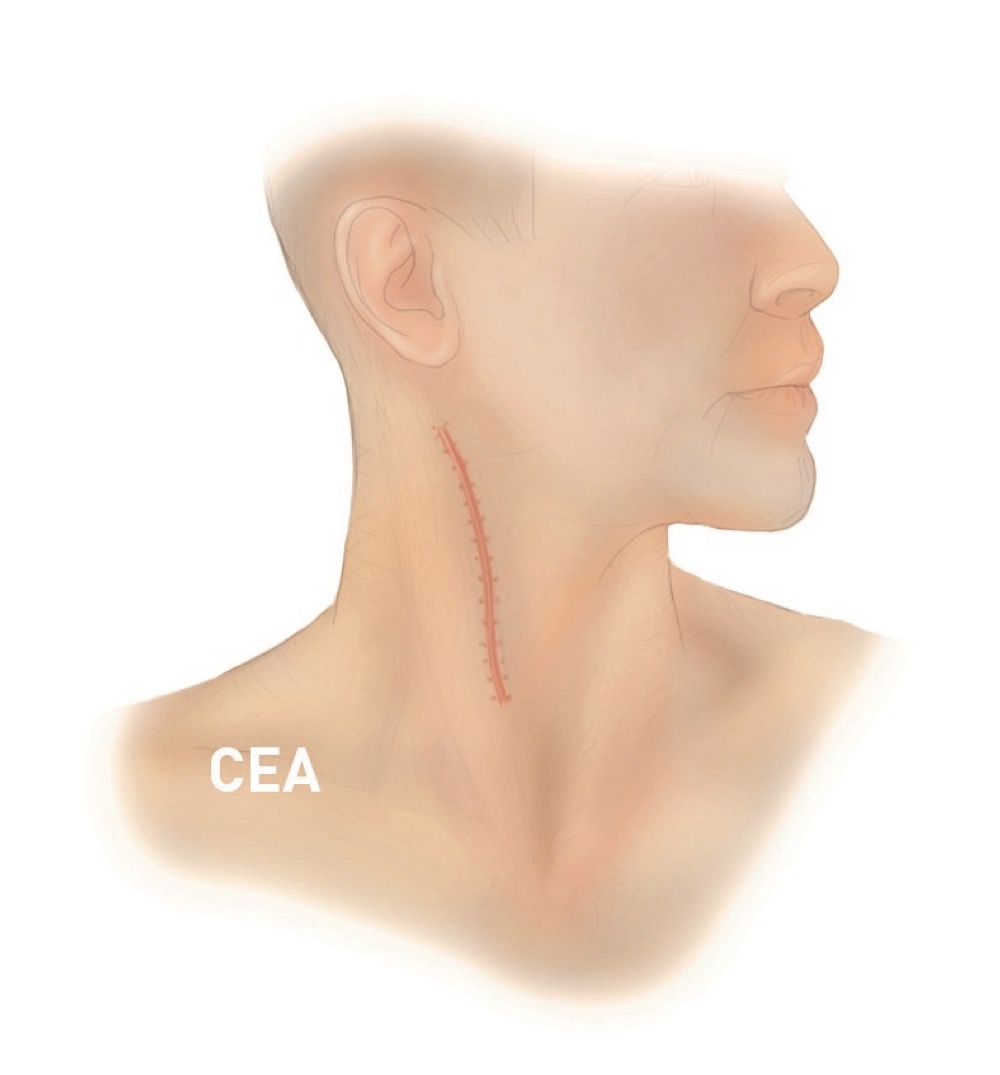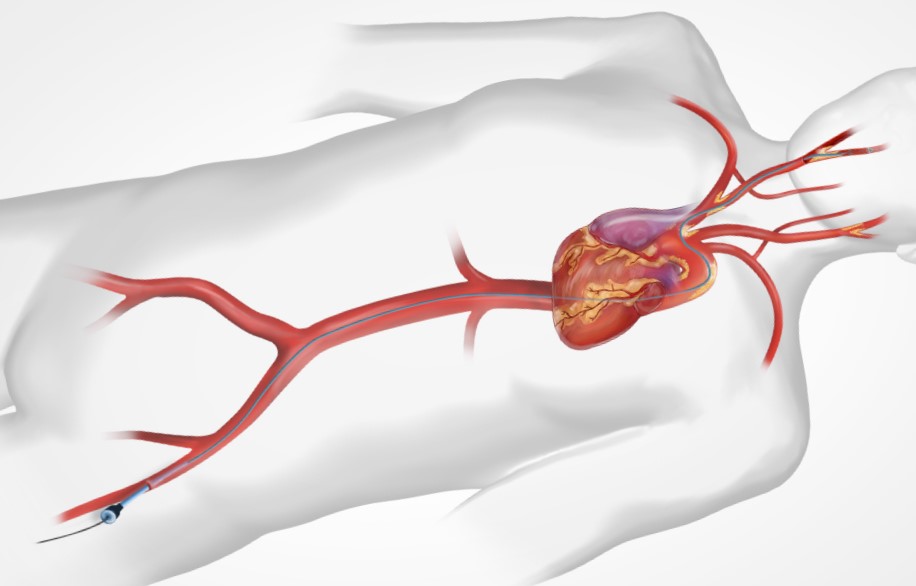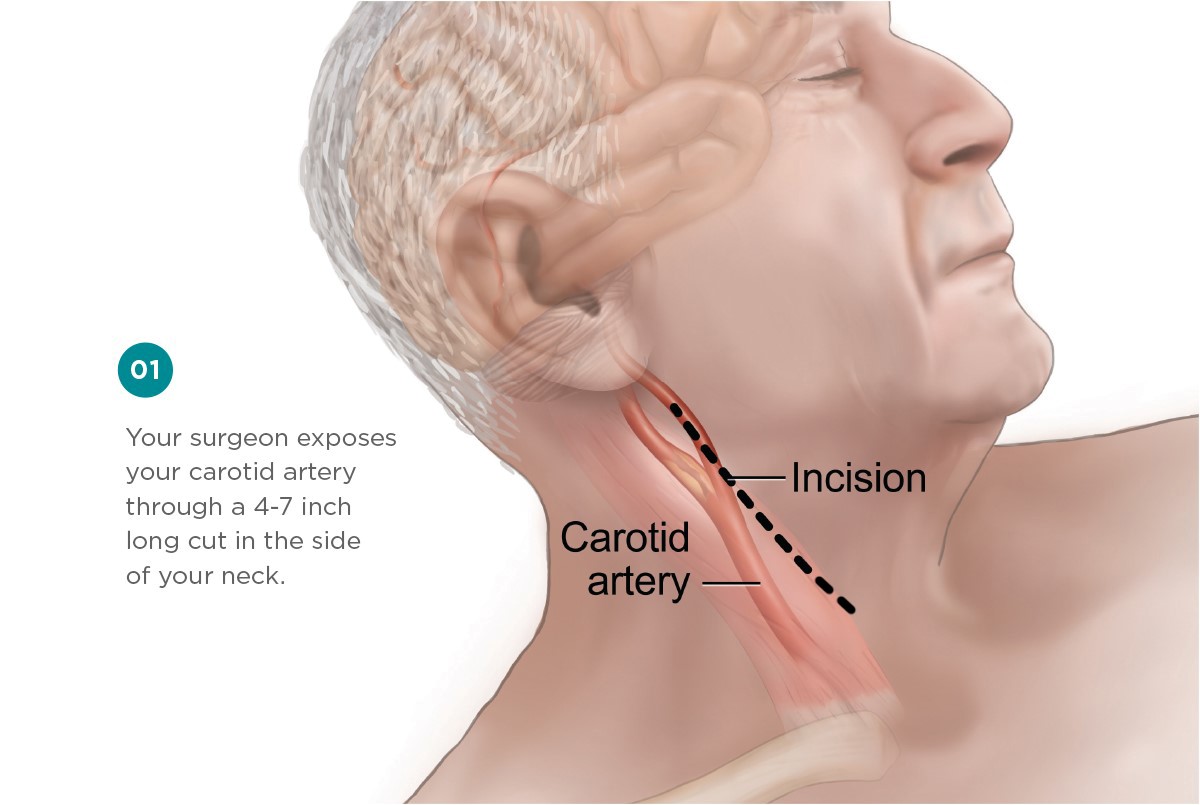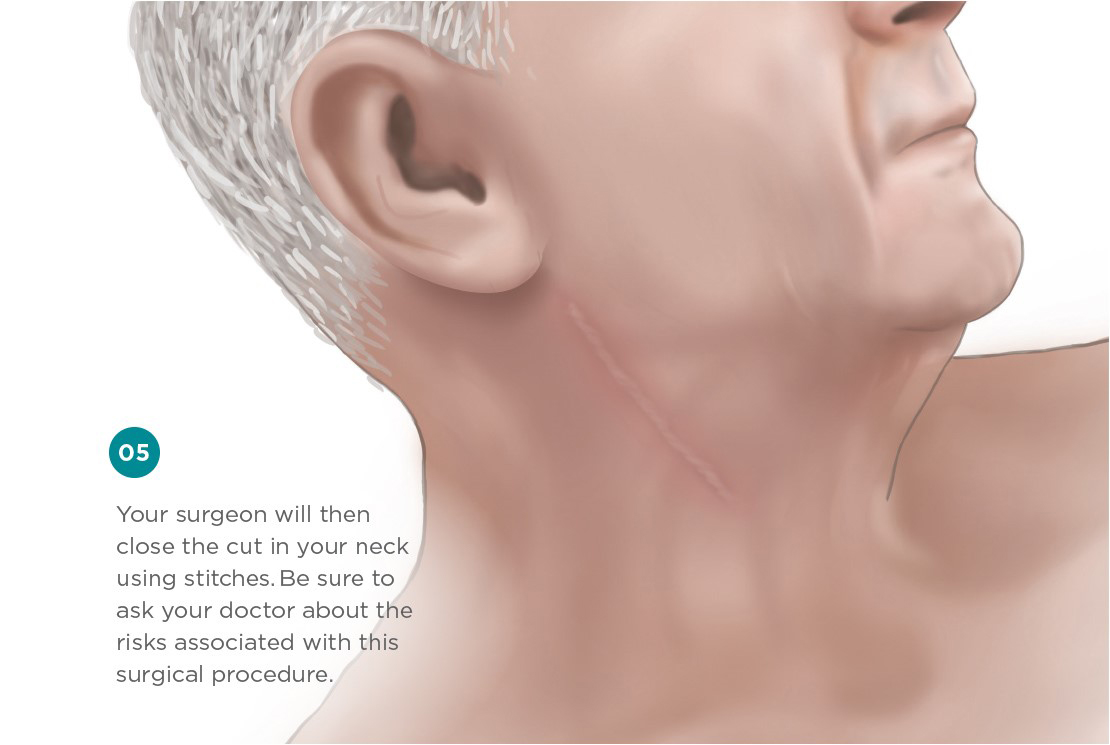Carotid
Endarterectomy
A surgical treatment option performed
to reduce the risk of stroke
Carotid
Endarterectomy
Carotid
Endarterectomy
How Carotid Endarterectomy is Performed
Carotid endarterectomy, also known as CEA, is a surgical procedure where fatty buildup (plaque) is removed from the inside of your carotid artery to restore normal blood flow to your brain and reduce your risk of stroke.
Risks of Carotid Endarterectomy
The risks involved in a carotid endarterectomy include a stroke during the procedure, as well as excess bleeding, infection and heart attack. Cranial nerve damage is also a risk in carotid endarterectomy that can cause issues with swallowing, speaking and sensation in the face. For patients concerned with these risks of surgery, a less invasive option such as TCAR reduces these risks and can be considered in consultation with your physician.

Less Invasive Treatment Options

Medical Therapy
Managing your carotid artery disease with medication

Transfemoral Carotid Artery Stenting
Carotid artery disease treated with a stent placed with access through the upper leg

Transcarotid Artery Revascularization
Minimally invasive option to treat carotid artery disease
Insurance and Medicare Coverage for Carotid Endarterectomy
Carotid endarterectomy is typically covered by insurance. Talk to your doctor to see if this is the best treatment option for you.

Diagnosed with Carotid Artery Disease?
Search physicians and practices that perform carotid artery surgery using the latest technology




